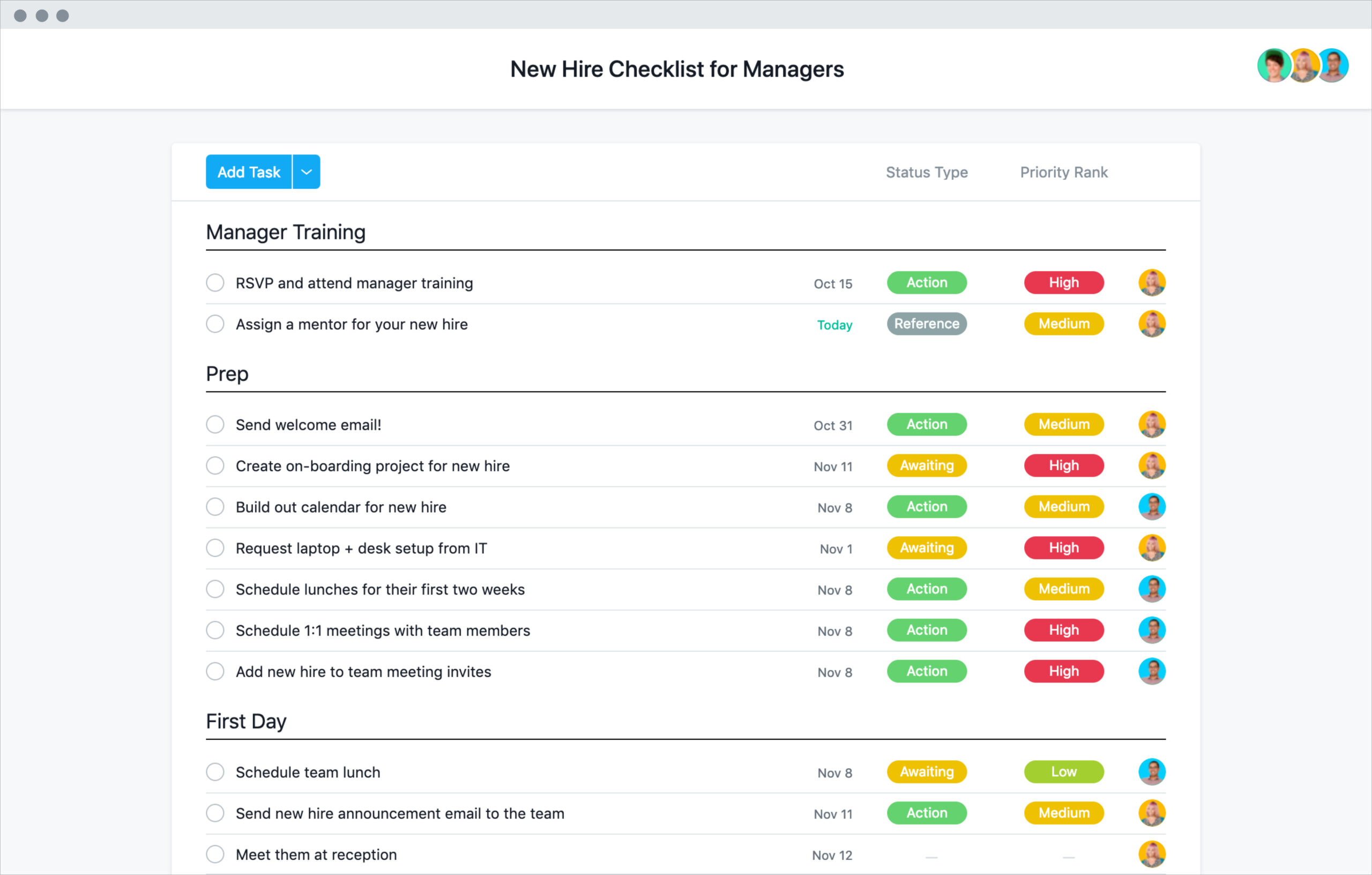Welcome to the ultimate onboarding checklist! Whether you are a new employee or a manager responsible for integrating new hires into your team, this comprehensive guide will help ensure a smooth and successful onboarding process. With a well-structured onboarding checklist, you can set your new employees up for success, boost their productivity, and improve retention rates. Let’s dive in!
Why is Onboarding Important?
Before we jump into the checklist, let’s first understand why onboarding is so crucial. Onboarding refers to the process of integrating new employees into an organization and helping them become productive members of the team. It goes beyond just orientation and paperwork; it’s about creating a positive and engaging experience for the new hires.
Effective onboarding has numerous benefits:
- Higher job satisfaction: Employees who go through a well-structured onboarding program are more likely to feel satisfied and engaged in their roles.
- Improved productivity: Onboarding helps new hires understand their roles, responsibilities, and expectations, enabling them to become productive more quickly.
- Reduced turnover: A successful onboarding process can significantly reduce turnover rates by making new employees feel valued and supported.
- Enhanced company culture: Onboarding provides an opportunity to introduce new hires to the company’s values, mission, and culture, fostering a sense of belonging.
The Onboarding Checklist
Now that we understand the importance of onboarding, let’s explore the step-by-step checklist to ensure the successful integration of new employees:
1. Pre-boarding
Pre-boarding is the phase that happens before the employee’s first day. It involves all the necessary preparations to welcome the new hire. During this stage, you should:
- Create an onboarding schedule and share it with the new employee.
- Prepare the employee’s workspace, including setting up their computer, email, and any necessary software or tools.
- Send a welcome package or email to introduce the new hire to the team and provide essential information about the company.
- Assign a mentor or buddy who can guide the new employee during their onboarding journey.
2. Orientation
The orientation phase occurs on the employee’s first day and focuses on introducing them to the company, its policies, and their immediate team. Here’s what you should cover:
- Welcome the new hire and provide a tour of the office.
- Explain the company’s mission, vision, and values.
- Provide an overview of the organization’s structure and introduce key team members.
- Review company policies, including code of conduct, dress code, and any other relevant guidelines.
3. Job-specific Training
This phase involves providing the new employee with the necessary knowledge and skills to perform their job effectively. Here’s what you should include:
- Provide detailed job descriptions and performance expectations.
- Offer training on specific tools, software, or systems the employee will be using.
- Assign a mentor or supervisor who can guide the employee through their job responsibilities.
- Provide opportunities for the employee to shadow experienced colleagues and learn from them.
4. Company Culture and Values
Introducing the new employee to the company’s culture and values is essential for fostering a sense of belonging. Here’s how you can do it:
- Organize team-building activities or social events to help the new hire bond with their colleagues.
- Share stories and examples that embody the company’s values and culture.
- Encourage the new employee to ask questions and provide feedback about their experiences.
- Offer opportunities for the employee to contribute to company initiatives or projects.
5. Ongoing Support and Check-ins
Onboarding doesn’t end after the first week or month. Ongoing support and check-ins are crucial for the long-term success of the new employee. Here’s how you can provide ongoing support:
- Schedule regular check-ins with the new employee to address any questions or concerns.
- Offer opportunities for additional training or professional development.
- Provide feedback and recognition for the employee’s progress and achievements.
- Ensure the employee has access to the resources and support they need to perform their job effectively.
6. Evaluation and Feedback
Evaluating the effectiveness of the onboarding process is essential for continuous improvement. Here’s how you can gather feedback:
- Conduct surveys or interviews to gather feedback from new employees about their onboarding experience.
- Collect feedback from managers and colleagues about the new employee’s performance and integration.
- Analyze the feedback and identify areas for improvement in the onboarding process.
- Make necessary adjustments to the onboarding checklist based on the feedback received.
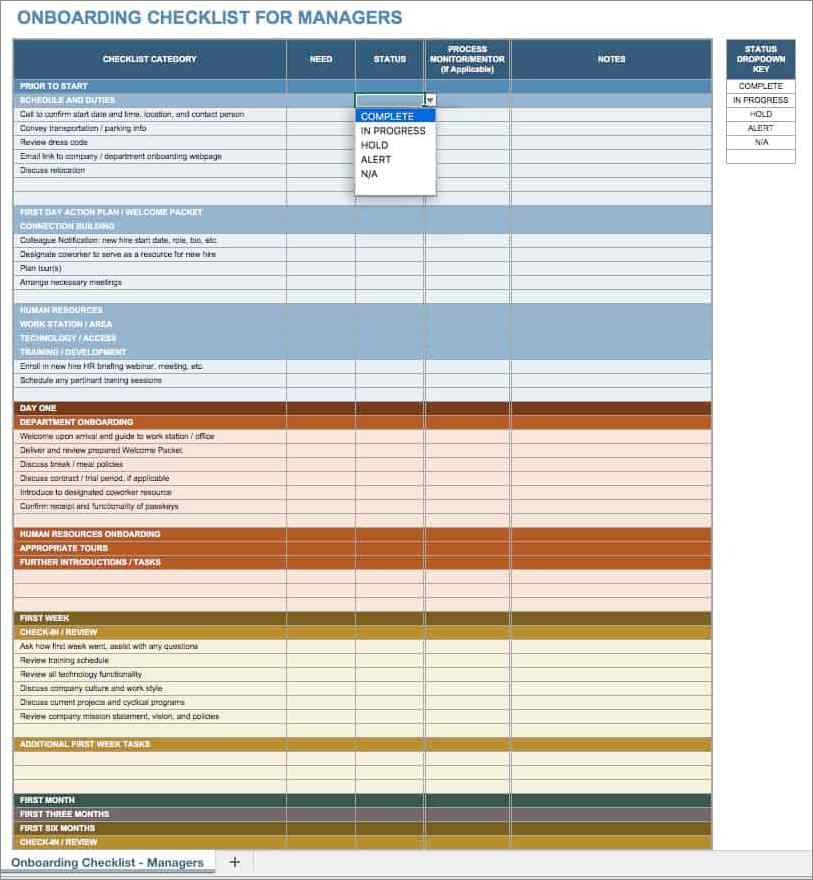
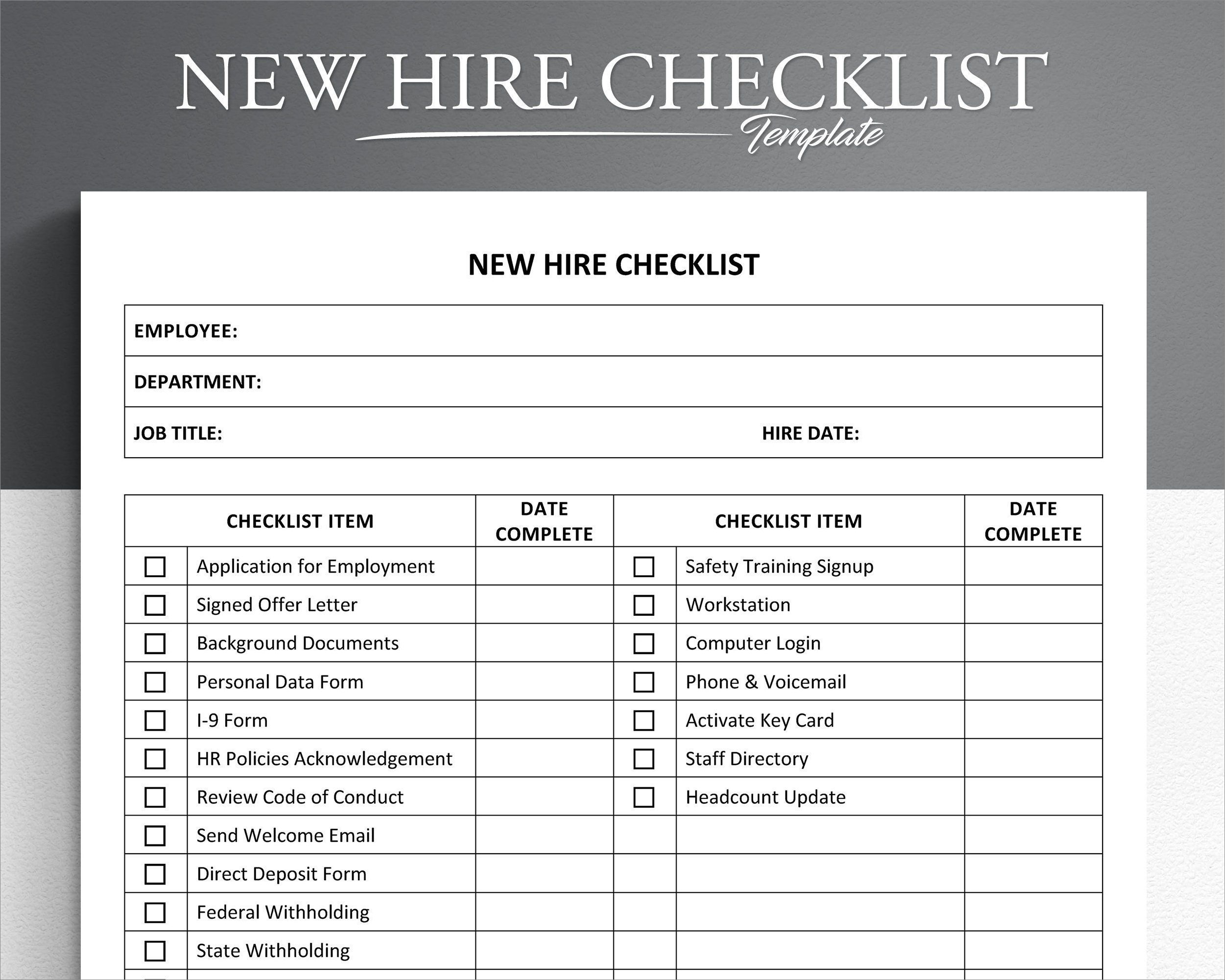
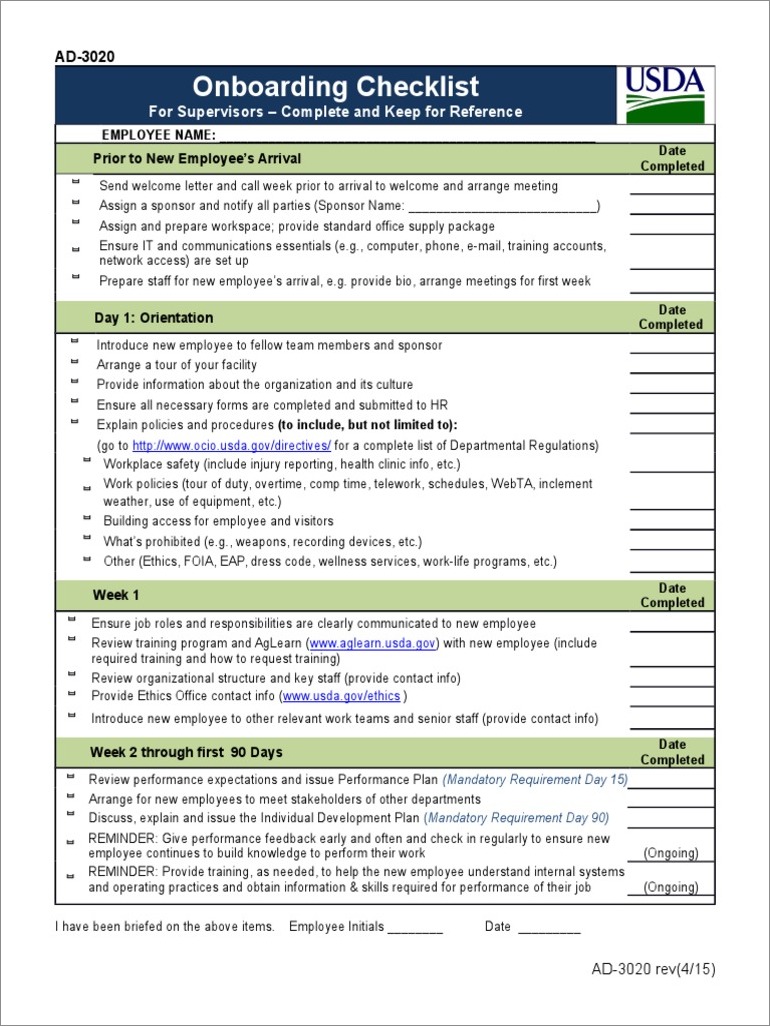
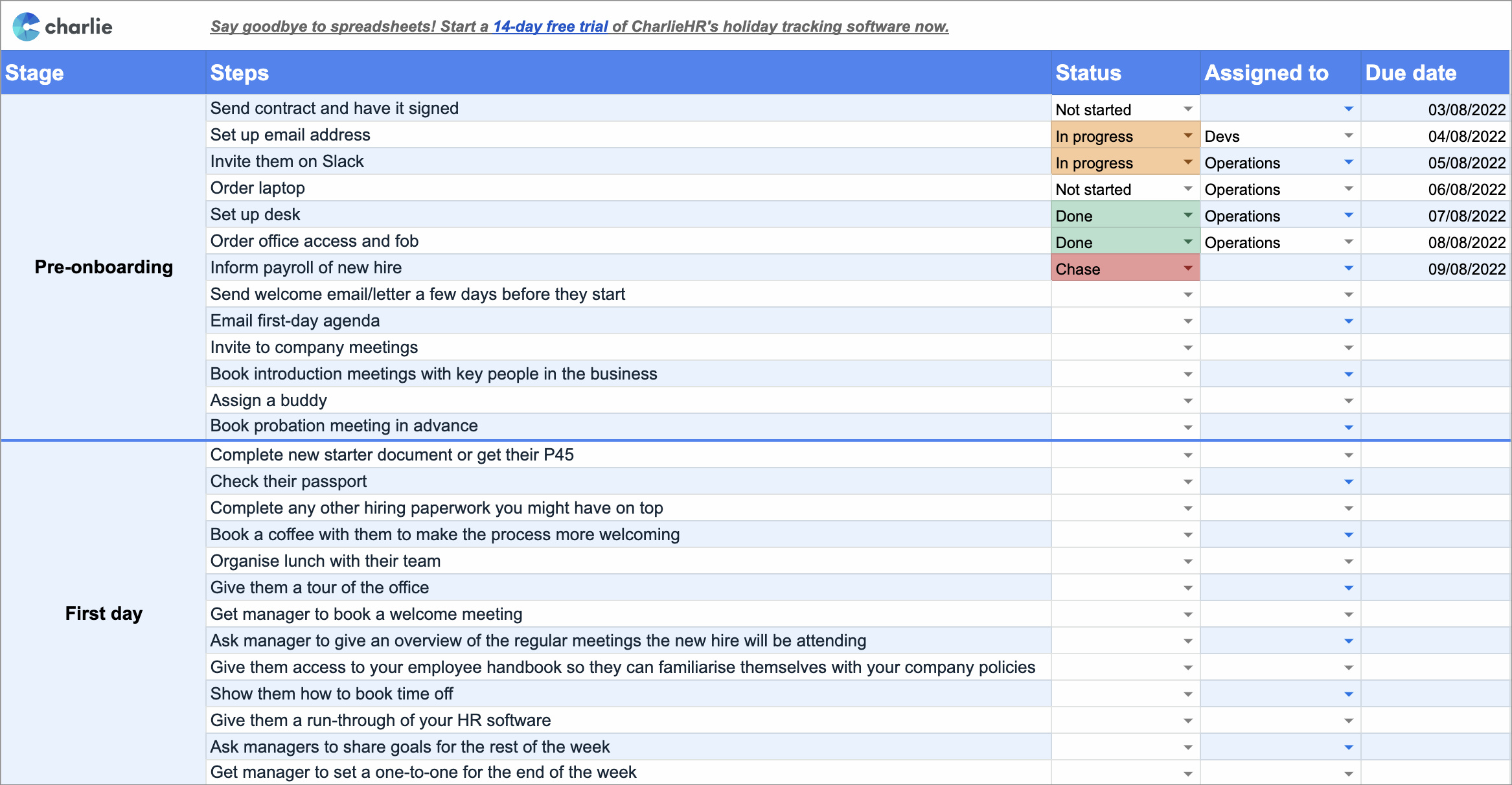
Conclusion
The onboarding process plays a vital role in setting new employees up for success and fostering a positive work environment. By following this comprehensive onboarding checklist, you can ensure that your new hires feel welcomed, supported, and equipped to thrive in their roles. Remember, effective onboarding is an ongoing process, so don’t hesitate to make adjustments and improvements based on feedback and evolving organizational needs. Here’s to successful onboarding and happy employees!
Onboarding Checklist Template Excel – Download
